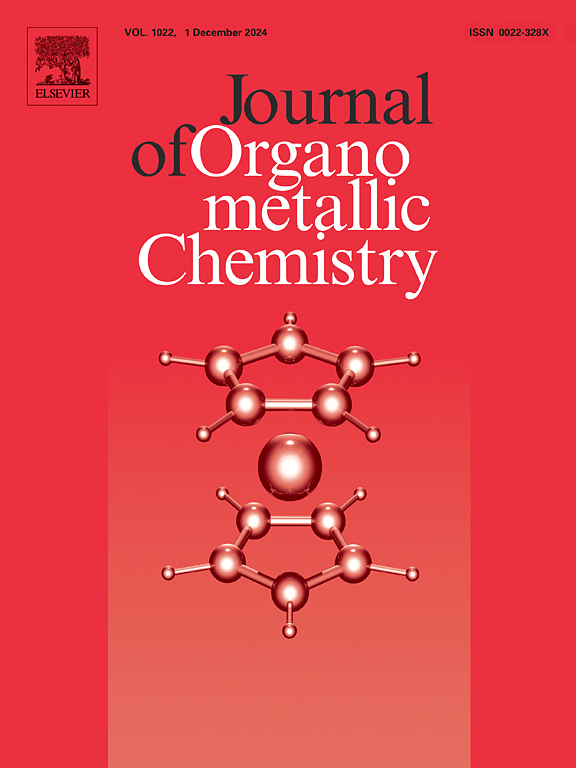N,S-rGO/NiFe2O4 as an effective photocatalyst for the reduction of nitroaromatic Compounds to the corresponding aminoaromatics under visible light
IF 2.1
3区 化学
Q3 CHEMISTRY, INORGANIC & NUCLEAR
引用次数: 0
Abstract
The accelerated pace of industrialization and the proliferation of diverse manufacturing sectors have led to significant environmental contamination, particularly by organic pollutants such as nitroaromatic compounds. Mitigating the associated ecological and toxicological impacts necessitates the development of environmentally benign strategies for their reduction to aminoaromatics. This study reports the synthesis of novel heterogeneous N,S co-doped reduced graphene oxide/ NiFe2O4 (N,S-rGO/NiFe2O4) nanocomposites via a one-step hydrothermal method. This approach simultaneously incorporates nitrogen and sulfur dopants into the graphene oxide matrix and integrates NiFe2O4 nanoparticles within the graphene layers. The structural, morphological, optical, and photocatalytic properties of the nanocomposites were systematically characterized using a comprehensive array of analytical techniques. The results confirm the successful co-doping of nitrogen and sulfur into the graphene oxide framework and the effective immobilization of NiFe2O4 nanoparticles onto the rGO surface. Notably, the synthesized nanocomposites exhibited outstanding photocatalytic activity under visible light, achieving complete reduction of nitrobenzene to aniline with 100 % conversion efficiency within 45 min, using hydrazine monohydrate as the hydrogen donor. Moreover, the photocatalyst demonstrated excellent stability and reusability, maintaining consistent catalytic performance over six consecutive cycles without any detectable loss in material integrity or conversion efficiency.

N,S-rGO/NiFe2O4作为可见光下硝基芳香族化合物还原为相应的氨基芳香族化合物的有效光催化剂
工业化步伐的加快和各种制造业部门的扩散导致了严重的环境污染,特别是由硝基芳香族化合物等有机污染物造成的污染。为了减轻相关的生态和毒理学影响,必须开发有利于环境的策略,将其还原为氨基芳烃。本研究采用一步水热法合成了新型非均相N,S共掺杂还原氧化石墨烯/NiFe2O4 (N,S- rgo /NiFe2O4)纳米复合材料。该方法同时将氮和硫掺杂剂整合到氧化石墨烯基体中,并将NiFe2O4纳米颗粒整合到石墨烯层中。利用一系列分析技术系统地表征了纳米复合材料的结构、形态、光学和光催化性能。结果证实了氮和硫在氧化石墨烯框架中成功共掺杂,以及NiFe2O4纳米颗粒在氧化石墨烯表面的有效固定。值得注意的是,所合成的纳米复合材料在可见光下表现出优异的光催化活性,以一水合肼为氢供体,在45 min内将硝基苯完全还原为苯胺,转化率为100%。此外,光催化剂表现出优异的稳定性和可重复使用性,在连续六个循环中保持一致的催化性能,而没有任何可检测到的材料完整性或转化效率损失。
本文章由计算机程序翻译,如有差异,请以英文原文为准。
求助全文
约1分钟内获得全文
求助全文
来源期刊

Journal of Organometallic Chemistry
化学-无机化学与核化学
CiteScore
4.40
自引率
8.70%
发文量
221
审稿时长
36 days
期刊介绍:
The Journal of Organometallic Chemistry targets original papers dealing with theoretical aspects, structural chemistry, synthesis, physical and chemical properties (including reaction mechanisms), and practical applications of organometallic compounds.
Organometallic compounds are defined as compounds that contain metal - carbon bonds. The term metal includes all alkali and alkaline earth metals, all transition metals and the lanthanides and actinides in the Periodic Table. Metalloids including the elements in Group 13 and the heavier members of the Groups 14 - 16 are also included. The term chemistry includes syntheses, characterizations and reaction chemistry of all such compounds. Research reports based on use of organometallic complexes in bioorganometallic chemistry, medicine, material sciences, homogeneous catalysis and energy conversion are also welcome.
The scope of the journal has been enlarged to encompass important research on organometallic complexes in bioorganometallic chemistry and material sciences, and of heavier main group elements in organometallic chemistry. The journal also publishes review articles, short communications and notes.
 求助内容:
求助内容: 应助结果提醒方式:
应助结果提醒方式:


